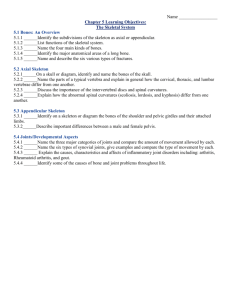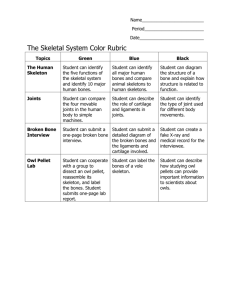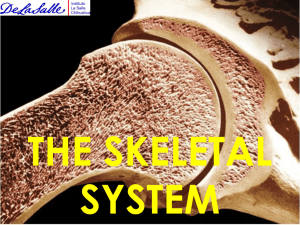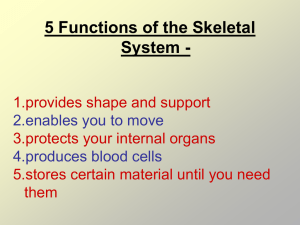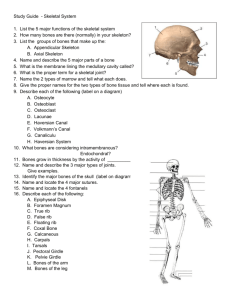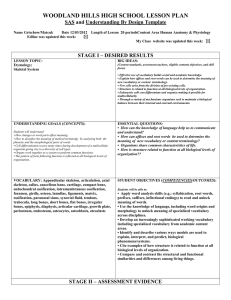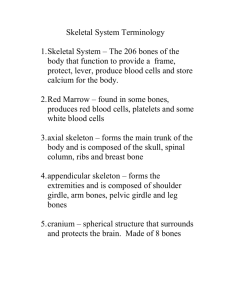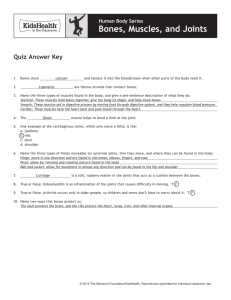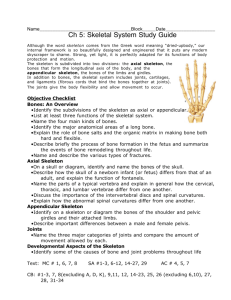AS LEVEL Anatomy & Physiology UNIT G451 (OCR)
advertisement
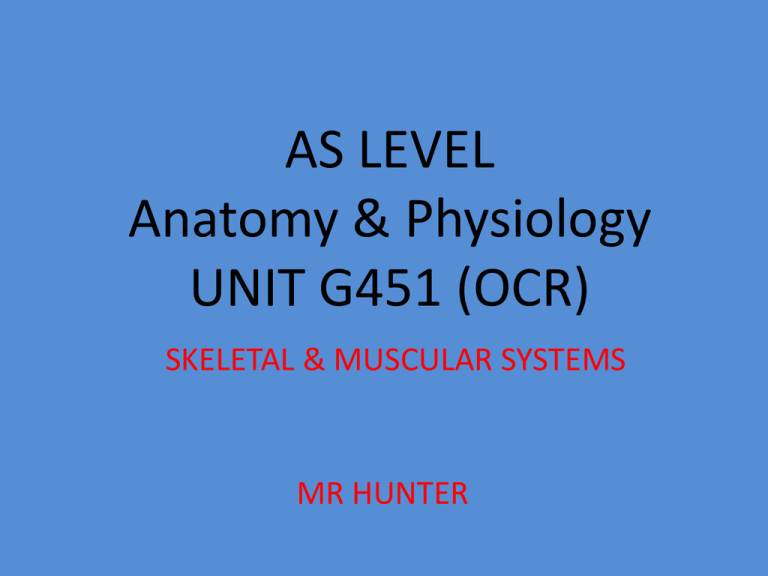
AS LEVEL Anatomy & Physiology UNIT G451 (OCR) SKELETAL & MUSCULAR SYSTEMS MR HUNTER Learning Objective • To identify the bones of the body • To understand the different types of bones • To identify the different types of joints and the movements they allow • To understand how this is put into practical examples Success Criteria • To create a skeleton labelling the bones and joints • To be able to explain within practical examples what bones and joints are being used at any given time SECTION 1 SKELETAL & MUSCUALAR SYSTEMS • Write down as many bones that you can remember • Write down as many joints as you can remember • You have 5 minutes to complete this Activity 1 • In groups of 4 complete the challenge • Using the sheets of paper you must create the human skeleton using only the information that your team has written down from the previous activity • The skeleton must be at least 3 foot long • It must clearly show individual bones • Also label the joints clearly in different colours • Next to each major bone & joint label information about each (type, function etc) • You have 30 minutes to complete this task Activity 2 • You have to create a key words sheet • This sheet will be added to regularly when we go through the unit • To start off with bones • 15 MINUTES to complete additionally for homework FEMUR LONG BONE, RED BLOOD CELL PRODUCTION, STABILITY, LARGEST BONE IN BODY, CONNECTED TO KNEE (HINGE JOINT), MOVEMENT (MUSCLE ATTACHMENT) Homework You are going to look at 3 different sports and pick a specific closed skill based on that sport e.g. Long Jump (which bones/muscles/joints)? For each Closed Skill you need to identify all 3 aspects as you have done previously and try to describe when these parts are being used during the action,
